
Birding Around Las Vegas, Favorite Places Far Away

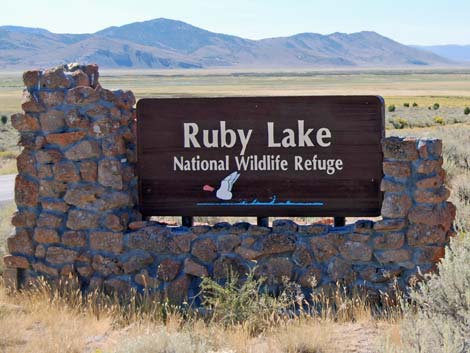 Ruby Lake National Wildlife Refuge entrance sign (view S) |
Overview Winter runoff from the mountains and water from springs combine to sustain wetlands in this broad, flat valley in northeast Nevada. Maintained gravel roads on dikes through the marsh provide easy access to great birding in this quiet, out-of-the-way refuge. Bring your canoe and do some fishing too. This is a great place to bird in northeast Nevada. It is a long way from anywhere, but it is a beautiful place with good birding. Link to map. |
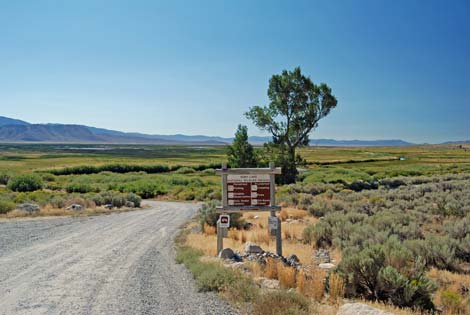 Start of Ruby Lake auto tour route |
Location Visitors must drive at least 20-30 miles on gravel roads to reach the refuge. Harrison Pass Road is a steep, rough, and winding gravel road not passable in winter and is never recommended for large trailers or motor homes. Check with refuge headquarters about road conditions, especially November through May. From Elko: Drive southeast on State Route (SR) 227 for 7 miles to SR-228. Turn right and drive south on SR-228 for 21 miles to Harrison Pass Rd. Turn left and drive east on Harrison Pass Rd for 15 miles to SR-767. Turn right and drive south on SR-767 for 10 miles to refuge headquarters. Watch for signs. From Ely: Drive west on US Hwy 50 for 29 miles to SR-767. Turn right onto SR-767 and drive north for 50 miles to the refuge. From Eureka: Drive east on U.S. Hwy 50 for 48 miles. Turn left onto SR-767 and drive north for 50 miles to the refuge. |
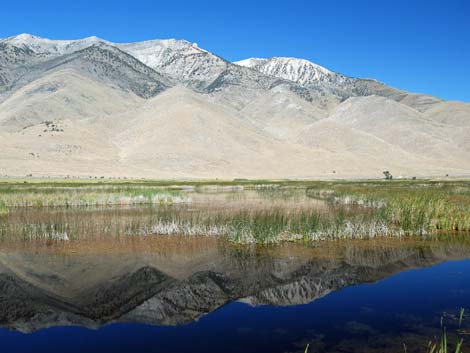 Reflections of snow in the dark waters |
Hours The refuge is never locked, but it is a day-use area. Fees None. Facilities: Few and Far Between Refuge Headquarters: Personnel usually are on duty at HQ Monday through Friday, 7am to 3:30pm. Brochures are available outside the office. |
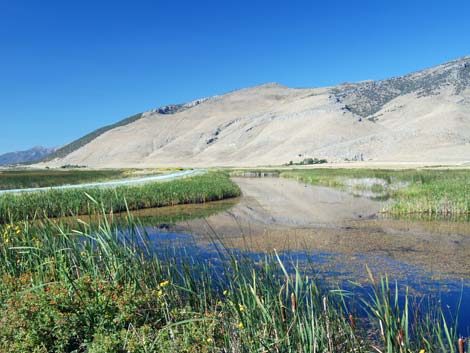 Auto tour road on levy in the marsh |
Camping: Camping is not permitted on the refuge, but campsites are available at the U.S. Forest Service South Ruby Campground, 1.5 miles south of refuge headquarters. Primitive camping is allowed on Forest Service land anywhere that you can drive at least 300 feet west of SR-767, and also on BLM land east of the refuge. Specialties Ducks, geese, swans, shorebirds, raptors, warblers, swallows, and vagrants during migration. For More Information Link to official website. |
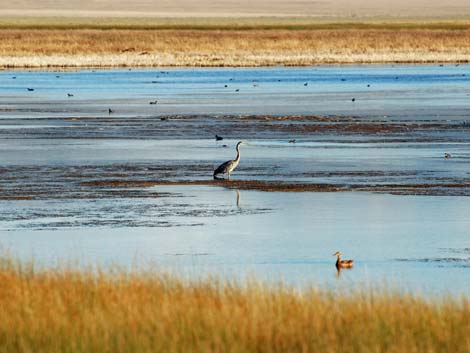 Great Blue Heron and ducks |
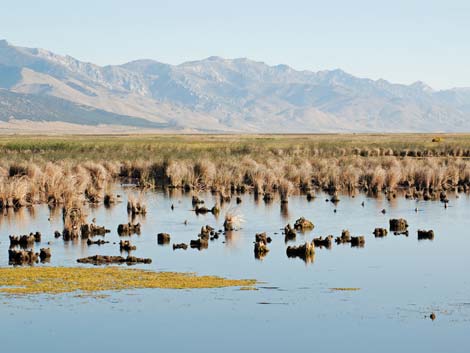 Dabbling duck foraging among grass hammocks |
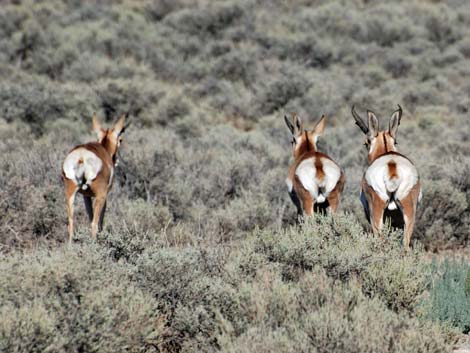 Pronghorn boys making an exit |
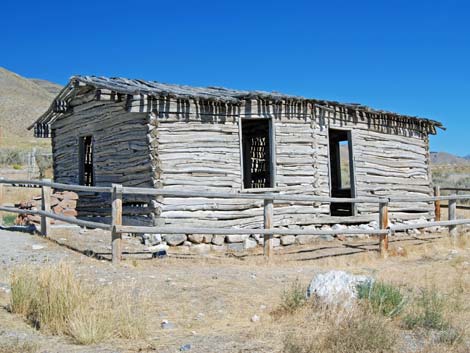 Historic Structure |
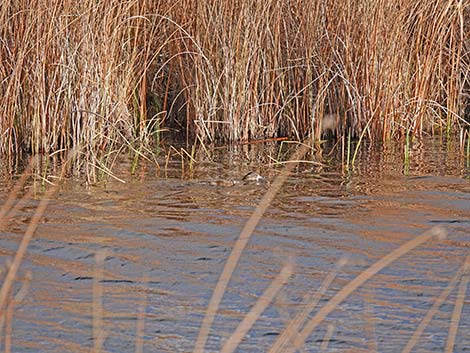 Female Scaup riding low in canal water |
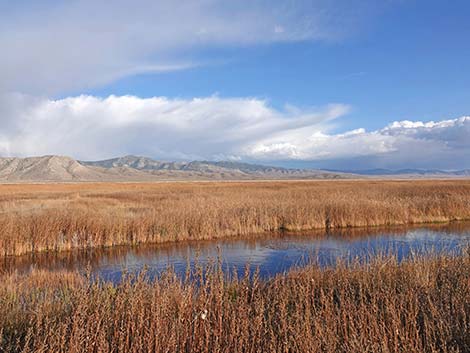 Ruby Marsh from Auto Tour Road during fall (view SE) |
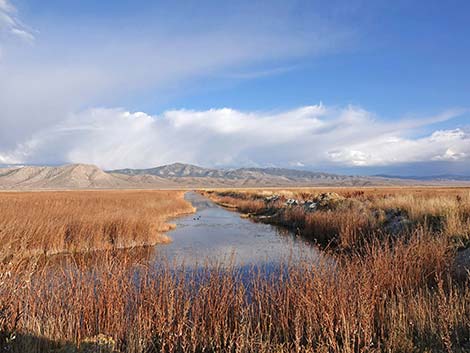 Ruby Marsh from Auto Tour Road during fall (view E) |
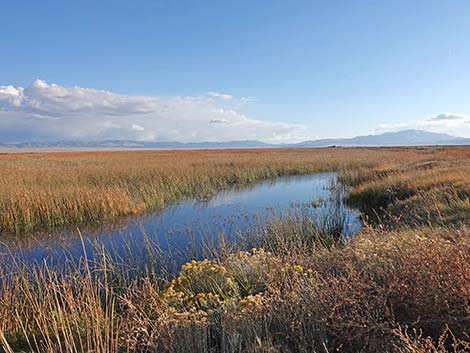 Ruby Marsh from Auto Tour Road during fall (view S) |
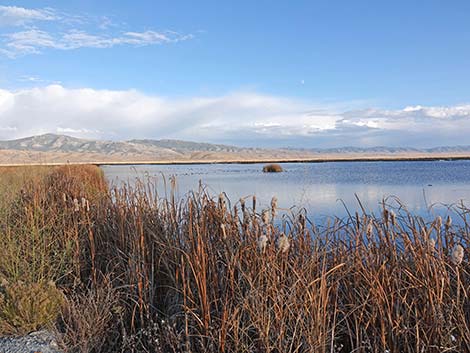 Ruby Marsh from Auto Tour Road during fall (view SE) |
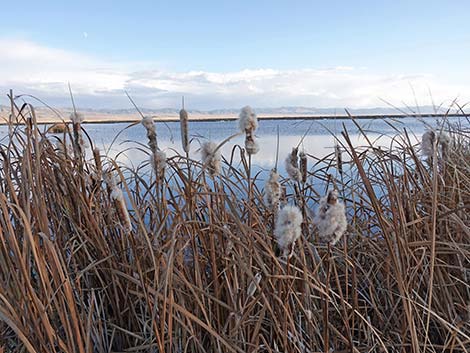 Ruby Marsh from Auto Tour Road during fall (view SE) |
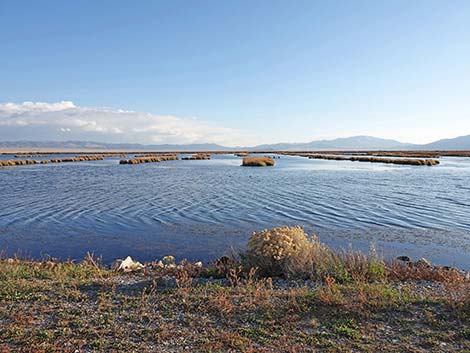 Ruby Marsh from Auto Tour Road during fall (view N) |
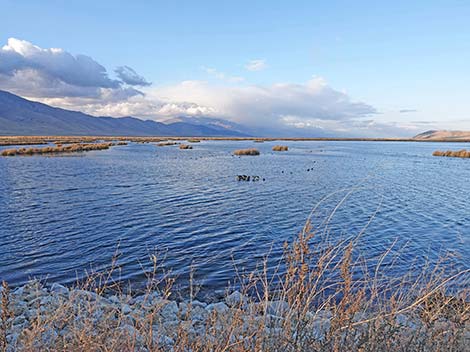 Ruby Marsh from Auto Tour Road during fall (view N) |
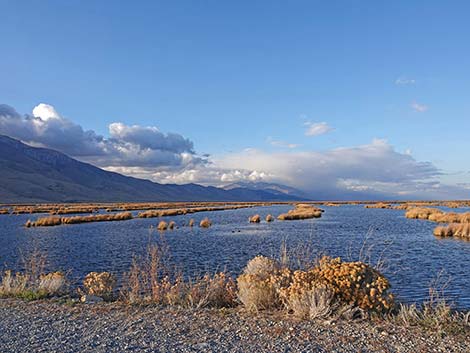 Ruby Marsh from Auto Tour Road during fall (view N) |
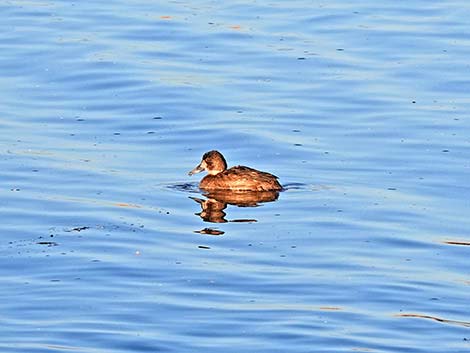 Lesser Scaup |
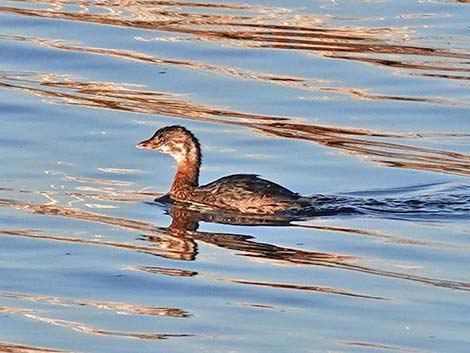 Young Pied-billed Grebe |
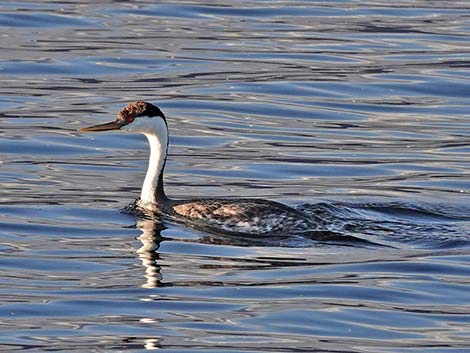 Western Grebe |
Happy birding! All distances, elevations, and other facts are approximate.
![]() ; Last updated 231116
; Last updated 231116
| Favorite Places Far Away | Birding Around Las Vegas | Glossary | Copyright, Conditions, Disclaimer | Home |